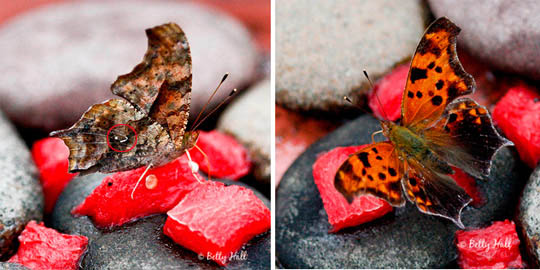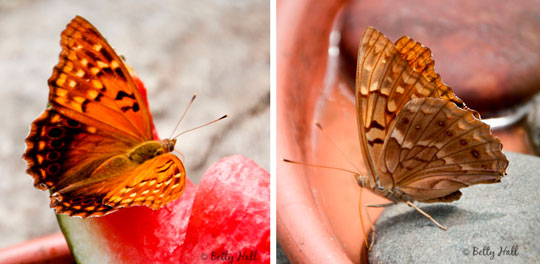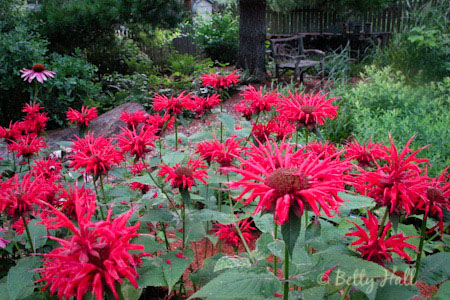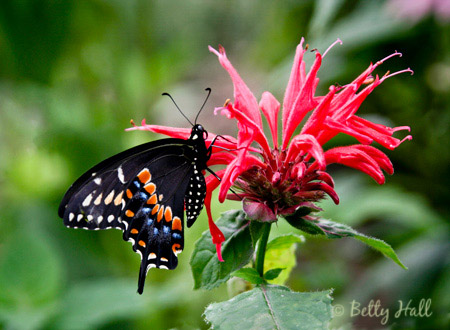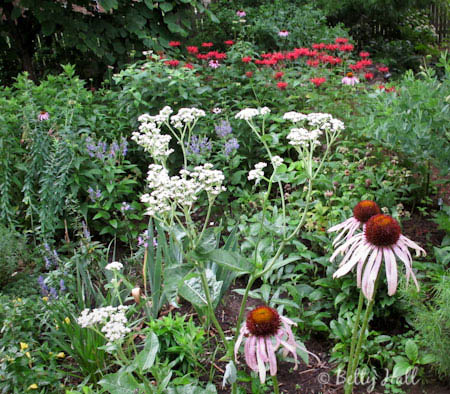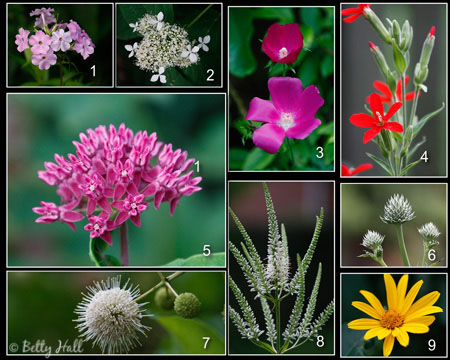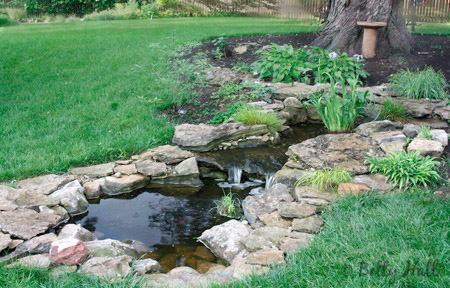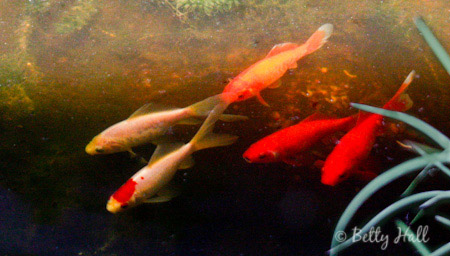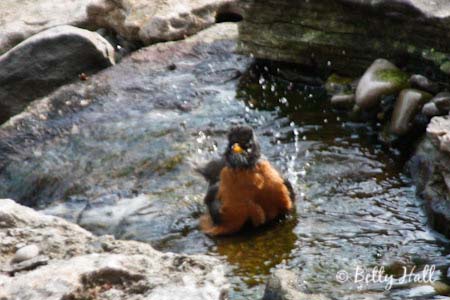Oh, happy day! Early last Thursday morning I checked the garden and was thrilled to discover a beautiful Monarch caterpillar (Danaus plexippus) on my annual Tropical Milkweed (Asclepias curassavica).
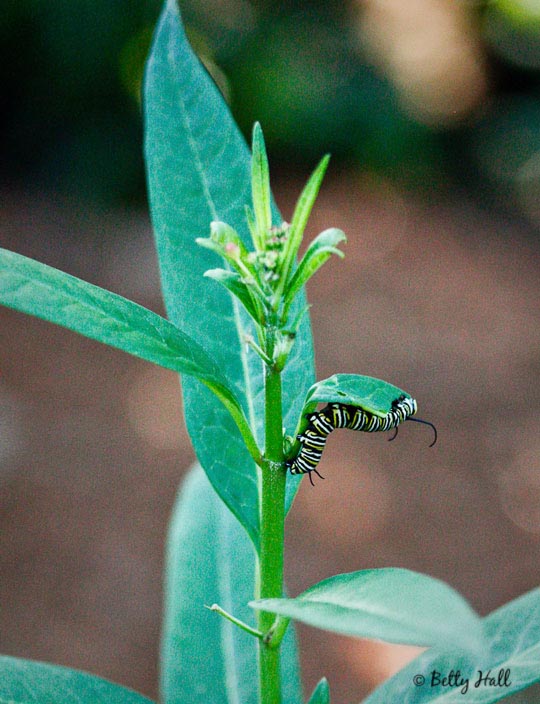
This is the first time I’ve grown Tropical Milkweed, also known as Bloodflower, and I’m delighted to know the Monarchs like it. It’s a tall slender plant and has been easy to fit among my other garden plants. It also has a beautiful blossom.
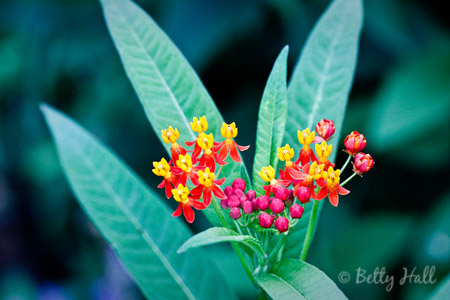
I’ve checked the North American Butterfly Association website and the more I read about this plant the more I’m impressed. It’s not native to the U.S. but is grown in a wide range, does not seem invasive, and attracts Monarchs. Sounds good to me. If you’ve grown Tropical Milkweed, I’d be glad to know your experience.
P.S. I realize this is short notice but I’ll be doing a presentation on Raising and Attracting Butterflies, at the Lexington Arboretum on Tuesday, July 19th, 10 a.m.- noon. I’d be glad to have you join us.
Update/Caution: I had a scary experience after cutting Tropical Milkweed for some Monarch caterpillars. Apparently I got some of the sap in my eyes, and by the next morning I could barely see. Read the full saga. If you are working with any milkweed plants, be careful to keep the sap away from your eyes and wash your hands thoroughly when you’re done.

